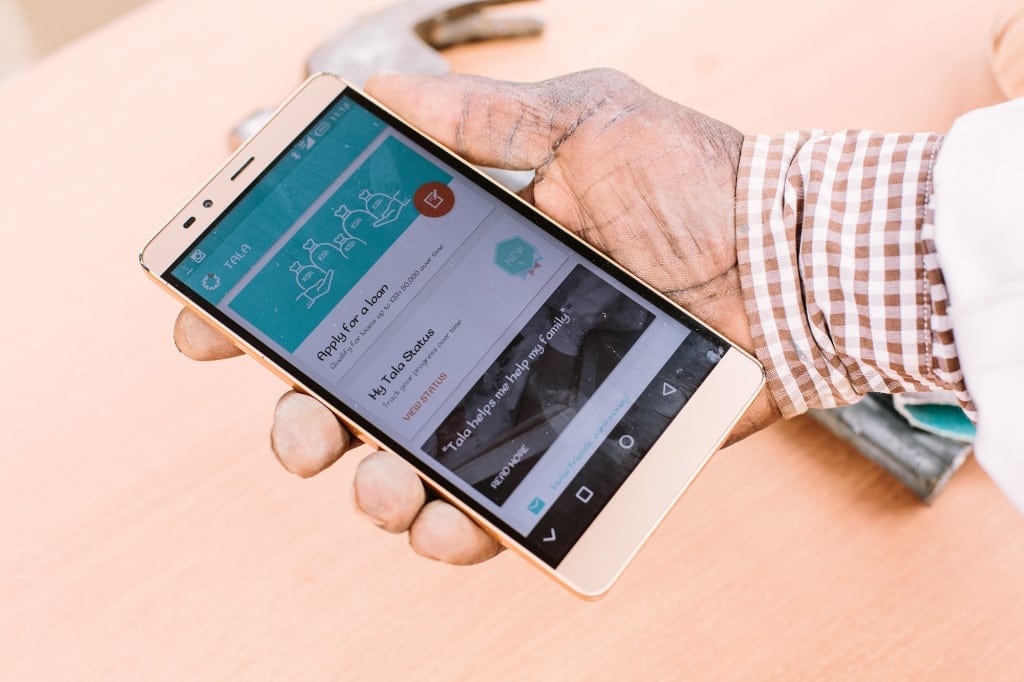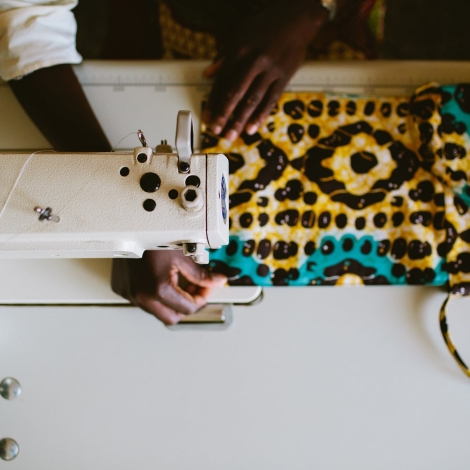InVenture is a data science company that builds financial identities for people who previously had none. Using over 10,000 unique data points from our customers’ mobile phones, we create an alternative credit score in order to assess the creditworthiness of people with little to no formal financial history in emerging markets. Our vision is to help the 2.5 billion unbanked men and women around the world access fair, flexible financial services.
Right now, we use our scores to approve our customers for small loans, which we service, between $50 and $500. We know our score works: we have achieved a 95 percent repayment rate, a rate that many big banks would envy. However, in order for us to accomplish what we’ve set out to do –radically expand access to financial services – we must make sure that we’re serving a heterogeneous population. We must ensure that we provide loans to all types of people, based on their unique creditworthiness, rather than on just a few metrics that might exclude millions.
Our algorithms seek out new and unconventional reasons to trust people, looking for behaviors and patterns that prove their willingness and capacity to repay a loan.
As Kate Crawford wrote in the New York Times in June, artificial intelligence has a “white guy problem.” Too many algorithms are inherently biased, written in the image of their creators and excluding the rest of the population. We know that bias would be a death sentence for our product – and our mission – and we are constantly finding ways to be more inclusive. But how can we guarantee we are doing all we can?
Understanding the constraints
Like any data science company, we work within a set of constraints. For one, we rely exclusively on mobile data; we can only service customers who own a mobile device. Fortunately, the massive proliferation of affordable smartphones in Kenya has meant that, in the last 18 months, we’ve been able to serve 100,000 customers. This growth is not going to slow down either; GfK, an international market research company, recently highlighted the remarkable increase in smartphone growth internationally, especially in emerging markets.
Our second major constraint is on the customer side. Right now, our main financial service is a loan, but loans are not for everyone, and financial inclusion is not synonymous with loan inclusion. We want to provide the right financial services for our customers, not necessarily the most profitable. This is why we launched a new version of our smartphone application, Tala, in Kenya; over the next few months we will roll out more personalized credit products and financial services that make our customers’ daily lives easier.

InVenture released an improved mobile application, Tala, that allows for more personalized financial services. Here a customer n Nairobi, Kenya, shows Tala on a mobile phone screen. Photo courtesy of InVenture
Using data – and research – to increase trust
So how do we maximize these two constraints? How do we provide the best, most inclusive financial services to the burgeoning population of smartphone owners?
The quick answer: data. Loads and loads of data. When a customer downloads Tala and grants us access to the data on his or her smartphone, we accumulate over 10,000 unique data points to make our credit decision. But data alone does not guarantee inclusiveness. If our algorithms choose one type of person, it doesn’t allow us to open our services to the largest number of people. For example, let’s pretend that there is an ideal customer. Let’s call him Jim. Jim has a steady income stream, owns a small business, has a solid savings account and has repaid previous loans. If our application self-selected for this one type of customer, then our repayment rate would near 100 percent, our risk would be heavily mitigated, but the deal breaker is that we would only be servicing customers who would already be able to take advantage of traditional financial services.
We have seen that the ratio of calls that are incoming versus outgoing between 9 pm and 12 am can predict if a customer repays a loan.
Instead our algorithms seek out new and unconventional reasons to trust people, looking for behaviors and patterns that prove their willingness and capacity to repay a loan. After aggregating thousands of customer profiles, we are able to see trends that correlate with repayment. For example, we have seen the ratio of calls that are incoming versus outgoing between 9 pm and 12 am can be predictive of loan payment; if less than 30 percent of calls are outgoing between these hours, then the repayment rate increases by 18 percent. We chose outgoing calls rather than incoming calls as our customers have control over their outgoing calls, something we want to maintain. Similarly, we found that customers with over 23 social media applications on their phones showed a 20 percent worse repayment rate, while customers with less than ten had improved rates.
These kinds of data points allow us to make intelligent credit decisions, but even they don’t guarantee inclusivity. In order to make sure that our company remains inclusive, we must remain cognizant of a few things.
First and foremost, we cannot become complacent with our data model. People are fluid, trends change, and relying on the same data algorithms limits inclusiveness. Sticking with one algorithm guarantees a certain customer, but ostracizes many more. While a cell phone does give a finite number of data points, that number is incredibly large, which means we will continue to leave no stone unturned and continue to learn the efficacy of each data point, opening up access to millions of diverse customers.
Data is meaningless without a rich understanding of our customers.
Second, we cannot solely rely on data. Data is meaningless without a rich understanding of our customers. That means pairing our immense amounts of quantitative data with qualitative insights. We emphasize user and market research, constantly stay on top of changes and trends in our markets, and dive deep into the challenges our customers may be facing. We listen to our customers as often as we can and provide avenues for them to speak directly to us.
In fact, listening to our customers is what led us to transition from our old Android application, Mkopo Rahisi, to our new financial platform, Tala. In addition to offering the same instant loans as Mkopo Rahisi, Tala provides a more holistic financial experience, including the ability for our customers to check their credit status. It will also, in the coming months, expand to offer even more services; as our customers told us, loans by themselves are not enough to achieve real financial freedom.
This is not something we would have learned from data, but it’s a challenge that data can help us solve.
Brenda’s story
We strive to provide the best services to the largest number of people; however, we never forget that our broader goal of helping 2.5 billion unbanked people is made up of 2.5 billion individuals. As we look forward, we take pride in looking back at the thousands of unique customer stories that come in.
By communicating with Brenda often, we found ways for her to pay back her loans fairly, even when emergencies came up, allowing her business to thrive.
Brenda is a college educated mother from Nairobi who sold curtains door to door. She aspired to open up a storefront, but several barriers kept her from accessing traditional loans. Meeting all of the requirements for obtaining a loan can be especially difficult for women, who face bias in dealing with male lenders. If fortunate enough to receive a loan, Brenda would have faced astronomically high interest rates making any deal unrealistic. Additionally, women like Brenda often face social pressure that keeps them from pursuing their business goals outside of the home.
Fortunately, Brenda did not let any of this adversity get in her way. Instead, after taking out 44 loans with us, she has opened up her own store. While Brenda’s story is a successful one, it was not always easy. Through her data we could follow her economic activity, and our interactions with Brenda allowed us to understand when she was dealing with a setback, including family illness. By communicating with Brenda often, we found ways for her to pay back her loans fairly, even when emergencies came up, allowing her business to thrive.
Our ability to customize our product to Brenda’s unique circumstances allowed us to make certain her business continued to grow despite potential setbacks. Our data and interactions allowed us to guarantee that Brenda would not fail.
As we have scaled, we have continued to stress the importance of personalization and specificity. Brenda is one of our hundreds of thousands of customers who have taught us
how to look at our data, make sure it provides fair financial access for the billions who deserve it, and most importantly ensure that we stay biased towards inclusivity.
Shivani Siroya is the founder and CEO of InVenture and a Contributing Editor at Engineering for Change.

